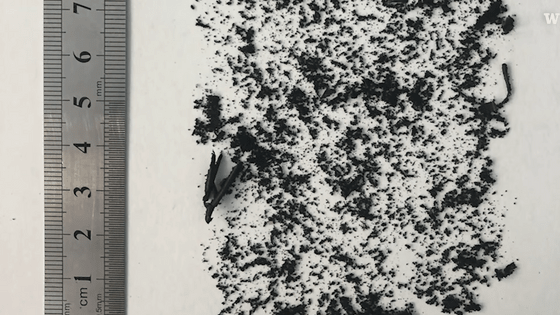It is reported that the majority of marine microplastics come from car tires.

Road Hazard: Evidence Mounts on Toxic Pollution from Tires - Yale E360
https://e360.yale.edu/features/tire-pollution-toxic-chemicals

Tire Dust Makes Up the Majority of Ocean Microplastics: Study

In
Generally, 6PPD is an anti-aging agent used in the tire manufacturing process to reduce cracking and deterioration. According to the research team, 6PPD itself is not very toxic, but when exposed to ozone in the atmosphere, it changes into a substance called ``6PPD-quinone''. It has been reported that when 6PPD-quinone dissolves in water, it becomes extremely toxic, resulting in the death of many fish, including coho salmon.

The discovery of 6PPD-quinone and research on its effects announced by Kolodjei and his research team has stimulated research on microplastic pollution from particles emitted from tires and brakes. In 2020, the non-governmental organization

Additionally, the Pew Charitable Trusts notes that marine life that ingests toxic microplastic particles released from synthetic tire rubber may exhibit behavioral changes or growth abnormalities. Masu.
Emissions Analytics , a British automotive research institute, reports that ``a total of 1 trillion ultra-fine microplastic particles are emitted every 1km driven by a car.'' It has also been pointed out that because these ultrafine particles are less than 100 nanometers in size, they can pass through the lungs and directly enter the bloodstream. Imperial College London in the UK says, ``Microplastic particles released as tires wear out can cause a variety of health problems, including heart disease, lung disease, developmental and reproductive disorders, and cancer.'' 'There is,' ( PDF file) .
Since car tires are the source of microplastic particles, it will be difficult to solve this problem even if electric cars become popular. In fact, emissions analytics has pointed out that because electric cars have higher weight and torque than conventional gasoline cars, they may emit about 20% more microplastic particles than gasoline cars.

On the other hand, regulatory authorities in each country are making various efforts to address this issue, and the EU has formulated new exhaust gas regulations, `` Euro 7, '' in November 2022. Euro 7 regulates the emission of microplastics released as brakes and tires wear out.
California environmental regulators are requiring tire manufacturers to find an alternative to 6PPD by 2024 to reduce future emissions of 6PPD-quinone into the atmosphere. In response to regulatory demands, tire manufacturers are conducting research on a variety of topics, including new tire compositions and special charging mechanisms that allow 6PPD to adhere to tires while reducing the release of microplastic particles.
Related Posts:







